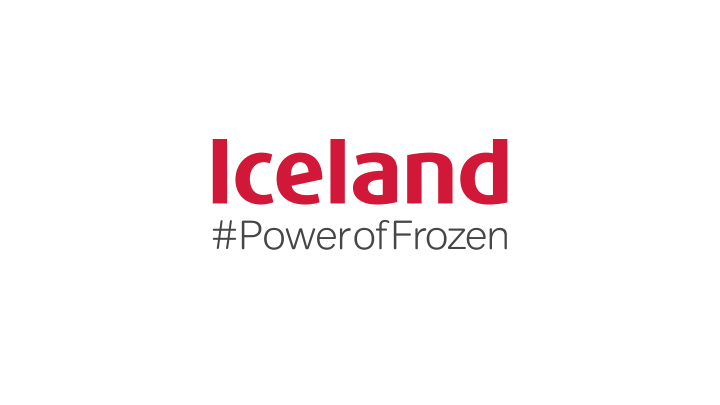



Iceland Foods UK Wales Number of Iceland Stores 865 57 Number of Food Warehouse Stores 3 12 Number of Employees 1,790 20,215 - retail 928 19,353 - head office 862 862 Online coverage 84% 82% Numbered of Delivered Sales (p.a.) 11m 1.1m £4.6m £1m Charitable Donations (last 4 years) £170m £2.7bn Turnover
Iceland At Iceland frozen food is about capturing the natural quality , goodness and nutritional value of foods from the start.
Health & Nutrition Since 3000 BC, man has harnessed the preserving qualities of ice to keep perishable ingredients as fresh as possible. Currently, in the UK, only 30% of adults and 9% of teenagers achieve the 5-a-day guideline for fruit and vegetables with average daily intakes of around 3-4 portions.
Health & Nutrition
University of Southampton Reviewing effectiveness of enhancing the availability and proximity of frozen and fresh fruit and vegetables on sale. Testing strategies that could enable young families, particularly those from disadvantaged backgrounds, to make healthy food choices is important to improve public health now and in the future.
Sugar Tax Bottled water is the fastest growing soft drink sector in our stores. In the past year bottled water has been given more merchandising space in stores, at the expense of carbonates. Last November saw the introduction of a range of “zero sugar” drinks and two new no added sugar Capri Sun varieties Iceland has a small range of own label chilled juice. We are working with suppliers to reduce sugar content in products
Quality Award-winning retailer, achieving more than 40 accolades in 2015 and named Britain’s Best Online Store in a Which? annual customer survey. When it comes to red meat, such as lamb, research has shown that neither freezing method nor the length of storage affect the quality.
Product Reformulation Example ingredient declaration – Chicken Nuggets MCDONALDS ICELAND NEW RECIPE BATTERED EITHER: Chicken Breast Meat (45%), Water, BREADED Chicken Breast Fillet (60%), Water, Wheat Flour, Vegetable Oil (Sunflower, Rapeseed), Fortified WHEAT Flour Breadcrumbs ( Wheat Flour, Dextrose, Salt, Yeast), ( WHEAT Flour, Calcium Carbonate, Iron, Niacin, Thiamin), Rapeseed Oil, Salt, Wheat Gluten, Sugar, Yeast Extract, Maize Flour, Modified Starch, WHEAT Semolina, Starch, Garlic Powder, Onion Powder, White Pepper, Dried Sage. Potassium Chloride, WHEAT Gluten, Breadcrumb ( WHEAT Flour, Salt), Whey Powder (from MILK ), Raising Agents (Disodium Diphosphate, Sodium Bicarbonate), Flavouring, Salt, Spices (contains CELERY ), Dextrose (from WHEAT ). OR: Chicken Breast Meat (45%), Water, WHEAT Flour (Calcium, Iron, Niacin, Thiamine), Maize Flour, Vegetable Oils (Sunflower, Rapeseed), Starches, WHEAT Semolina, Modified Starch, Breadcrumb (contains WHEAT ), Dried Glucose Syrup, WHEAT Gluten, Natural Flavourings, Flavour Enhancer (Potassium Chloride), Raising Agents (Disodium Diphosphate, Sodium Hydrogen Carbonate), Salt, Spices (Pepper, CELERY ), Dextrose. Prepared in the restaurants using a non-hydrogenated vegetable oil. N.B. May contain traces of mustard and egg.
Value One study compared the cost of serving fresh and frozen food in a pub or restaurant. It was found that dishes cooked from fresh cost at least 24 per cent more than a similar frozen alternative.
Less waste Eating more frozen food could help families save up to £250 a year by cutting waste. It’s estimated that frozen food can reduce household food waste by as much as 47%.
Taste Research has proven that – contrary to the belief of many chefs – the taste and texture of frozen products are just as good as fresh.
Convenience Consumers have become more interested in the natural integrity of food and are keen for it to contain fewer additives. Pressure on time, variable cooking skills, low confidence and the demand for fresh tasting, unprocessed food are all issues that frozen can address.
Slimming World In an industry first, the meals feature the recipe on the packaging so people can recreate the recipes at home. In their first week on sale 1.4m meals from the Slimming World food range were sold in Iceland stores.
Choice Planning meals and thinking up innovative ways of what to cook with what’s in the freezer can be built into family activities, stimulating and boosting the imagination.
Provenance All of Iceland’s products are labelled using standardised methods on the pack with a complete list of ingredients, along with their nutritional value as consumed. Iceland remains committed to providing safe, nutritious and ethically sourced food, bringing it to our tables from across the world
Recommend
More recommend